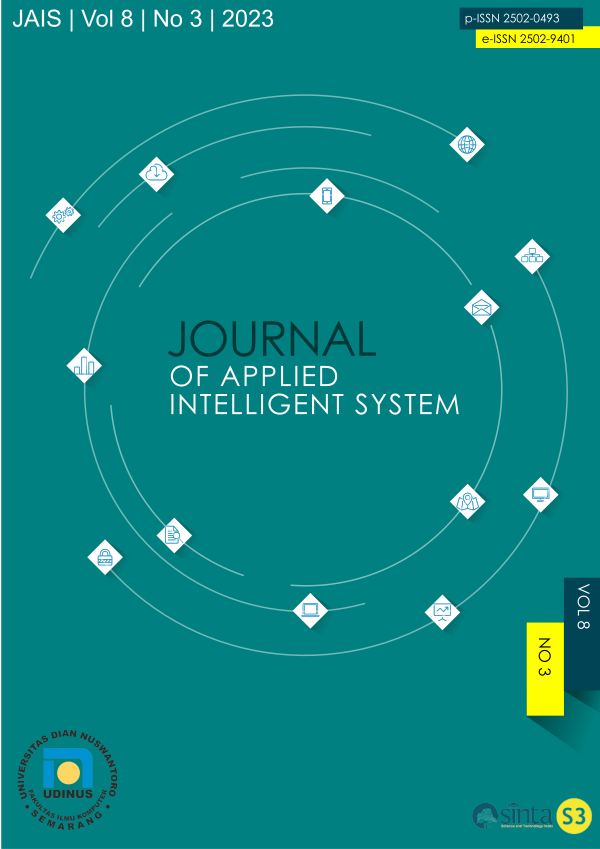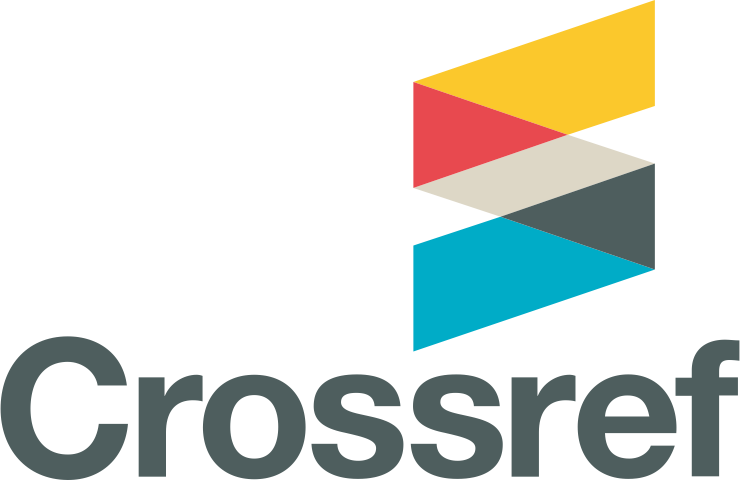Covid-19 Classification using Convolutional Neural Networks Based on Adam, RMSP, and SGD Optimalization
DOI:
https://doi.org/10.33633/jais.v8i3.9492Abstract
In this comprehensive study, a meticulous analysis of the application of Convolutional Neural Network (CNN) methodologies in the classification of Covid-19 and non-Covid-19 cases was conducted. Leveraging diverse optimization techniques such as RMS, SGD, and Adam, the research systematically evaluated the performance of the CNN model in accurately discerning intricate patterns and distinct features associated with Covid-19 pathology. the implementation of the RMS and Adam optimization methods resulted in the highest accuracy levels, with both models achieving an impressive 98% accuracy in the classification of Covid-19 and non-Covid-19 cases. Leveraging the robust capabilities of these optimization techniques, the study successfully demonstrated the effectiveness of the RMS and Adam models in enhancing the precision and reliability of the Convolutional Neural Network (CNN) for the accurate identification and differentiation of Covid-19 patterns within the medical imaging datasets. The notable achievement of 98% accuracy further emphasizes the potential of these optimization methods in advancing the capabilities of CNN-based diagnostic tools, thus contributing significantly to the ongoing efforts in Covid-19 diagnosis and management.References
S. Ludwig and A. Zarbock, “Coronaviruses and SARS-CoV-2: A Brief Overview,” Anesthesia and Analgesia, vol. 131, no. 1. Lippincott Williams and Wilkins, pp. 93–96, Jul. 01, 2020. doi: 10.1213/ANE.0000000000004845.
Z. Wu and J. M. McGoogan, “Characteristics of and Important Lessons from the Coronavirus Disease 2019 (COVID-19) Outbreak in China: Summary of a Report of 72314 Cases from the Chinese Center for Disease Control and Prevention,” JAMA - Journal of the American Medical Association, vol. 323, no. 13. American Medical Association, pp. 1239–1242, Apr. 07, 2020. doi: 10.1001/jama.2020.2648.
A. Kumar et al., “Wuhan to World: The COVID-19 Pandemic,” Frontiers in Cellular and Infection Microbiology, vol. 11. Frontiers Media S.A., Mar. 30, 2021. doi: 10.3389/fcimb.2021.596201.
S. Chauhan, “Comprehensive review of coronavirus disease 2019 (COVID-19),” Biomedical Journal, vol. 43, no. 4. Elsevier B.V., pp. 334–340, Aug. 01, 2020. doi: 10.1016/j.bj.2020.05.023.
T. Dzieciatkowski, L. Szarpak, K. J. Filipiak, M. Jaguszewski, J. R. Ladny, and J. Smereka, “COVID-19 challenge for modern medicine,” Cardiology Journal, vol. 27, no. 2. Via Medica, pp. 175–183, May 18, 2020. doi: 10.5603/CJ.a2020.0055.
F. Parvin, S. Islam, Z. Urmy, and S. Ahmed, “European Journal of Physiotherapy and Rehabilitation Studies THE SYMPTOMS, CONTAGIOUS PROCESS, PREVENTION AND POST TREATMENT OF COVID-19”, doi: 10.5281/zenodo.3779252.
N. R. D. Cahyo, C. A. Sari, E. H. Rachmawanto, C. Jatmoko, R. R. A. Al-Jawry, and M. A. Alkhafaji, “A Comparison of Multi Class Support Vector Machine vs Deep Convolutional Neural Network for Brain Tumor Classification,” in 2023 International Seminar on Application for Technology of Information and Communication (iSemantic), IEEE, Sep. 2023, pp. 358–363. doi: 10.1109/iSemantic59612.2023.10295336.
V. Bhanumathi and R. Sangeetha, “CNN Based Training and Classification of MRI Brain Images,” in 2019 5th International Conference on Advanced Computing & Communication Systems (ICACCS), IEEE, Mar. 2019, pp. 129–133. doi: 10.1109/ICACCS.2019.8728447.
A. Wadhwa, A. Bhardwaj, and V. Singh Verma, “A review on brain tumor segmentation of MRI images,” Magnetic Resonance Imaging, vol. 61. Elsevier Inc., pp. 247–259, Sep. 01, 2019. doi: 10.1016/j.mri.2019.05.043.
R. Sarki, K. Ahmed, H. Wang, Y. Zhang, J. Ma, and K. Wang, “Image Preprocessing in Classification and Identification of Diabetic Eye Diseases,” Data Sci Eng, vol. 6, no. 4, pp. 455–471, Dec. 2021, doi: 10.1007/s41019-021-00167-z.
K. M. O. Nahar et al., “Recognition of Arabic Air-Written Letters: Machine Learning, Convolutional Neural Networks, and Optical Character Recognition (OCR) Techniques,” Preprints (Basel), Sep. 2023, doi: 10.20944/preprints202309.1806.v1.
H. R. Yulianto and Afiahayati, “Fighting COVID-19: Convolutional Neural Network for Elevator User’s Speech Classification in Bahasa Indonesia,” in Procedia CIRP, Elsevier B.V., 2021, pp. 84–91. doi: 10.1016/j.procs.2021.05.079.
H. Mukherjee, S. Ghosh, A. Dhar, S. M. Obaidullah, K. C. Santosh, and K. Roy, “Deep neural network to detect COVID-19: one architecture for both CT Scans and Chest X-rays,” Applied Intelligence, vol. 51, no. 5, pp. 2777–2789, May 2021, doi: 10.1007/s10489-020-01943-6.
S. Punitha, T. Stephan, R. Kannan, M. Mahmud, M. S. Kaiser, and S. B. Belhaouari, “Detecting COVID-19 From Lung Computed Tomography Images: A Swarm Optimized Artificial Neural Network Approach,” IEEE Access, vol. 11, pp. 12378–12393, 2023, doi: 10.1109/ACCESS.2023.3236812.
A. Theissler, M. Thomas, M. Burch, and F. Gerschner, “ConfusionVis: Comparative evaluation and selection of multi-class classifiers based on confusion matrices,” Knowl Based Syst, vol. 247, Jul. 2022, doi: 10.1016/j.knosys.2022.108651.
Downloads
Published
Issue
Section
License
Copyright (c) 2023 Moch Sjamsul Hidajat, Dibyo Adi Wibowo

This work is licensed under a Creative Commons Attribution-NonCommercial 4.0 International License.
- Authors retain copyright and grant the journal right of first publication with the work simultaneously licensed under a Creative Commons Attribution License that allows others to share the work with an acknowledgment of the work's authorship and initial publication in this journal.
- Authors are able to enter into separate, additional contractual arrangements for the non-exclusive distribution of the journal's published version of the work (e.g., post it to an institutional repository or publish it in a book), with an acknowledgment of its initial publication in this journal.
- Authors are permitted and encouraged to post their work online (e.g., in institutional repositories or on their website) prior to and during the submission process, as it can lead to productive exchanges, as well as earlier and greater citation of published work (See The Effect of Open Access).









